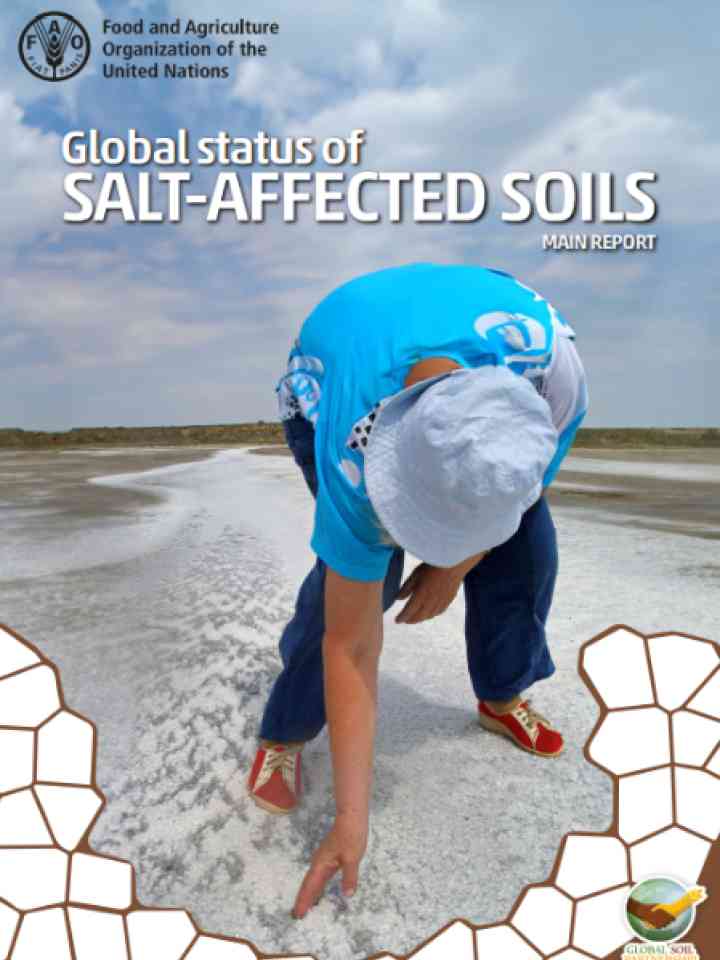Global status of salt-affected soils
Salt-affected soils, characterized by high soluble salts (saline) or exchangeable sodium (sodic), impact plant growth and occur globally, especially in arid and coastal regions. Salinization stems from natural causes (e.g. climate change, sea level rise) and human actions. FAO’s Global Map of Salt-Affected Soils reveals that over 1.381 million hectares, 10.7 percent of global land, are affected, with Australia, Argentina and Kazakhstan among the most impacted countries.
This report delivers a global perspective on salt-affect soils and underscores mitigation strategies like improved drainage, soil amendments, and the cultivation of salt-tolerant plants. Key recommendations include scaling sustainable practices, investing in salt-tolerant crop markets, improving data collection and water quality monitoring, conserving ecosystems, and fostering cross-sector collaboration. Such integrated efforts aim to boost food production and resilience in affected regions while protecting vital ecosystems.
Explore further
